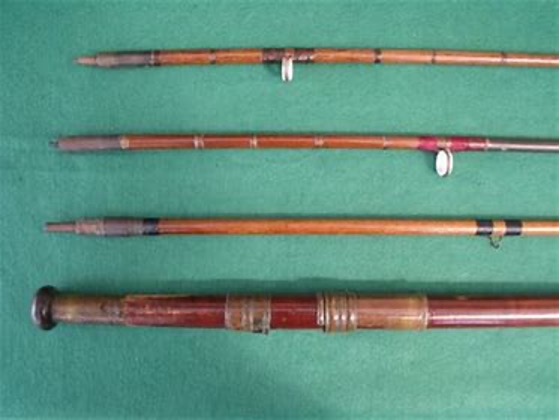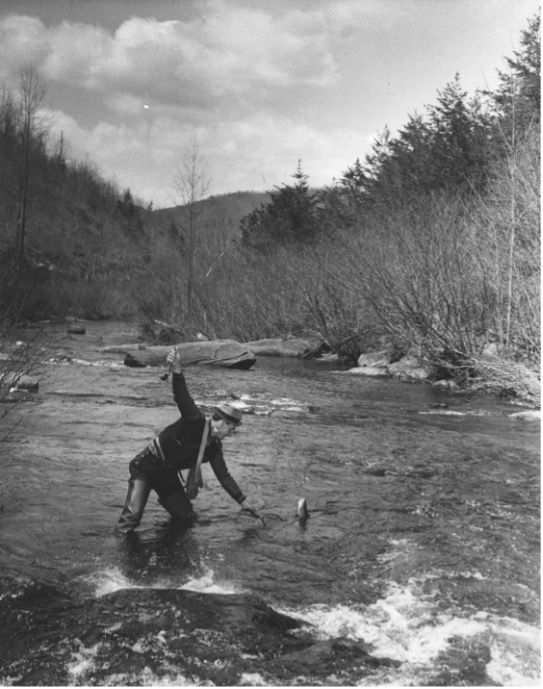Humankind have always fished to put food on the table. Today, many anglers have developed a passion for the sport that goes far beyond sustenance, discovering a welcome release from the demands of modern life and the challenge of outwitting fish and conditions. In virtually every developed country today, fly fishing is an incredibly popular pastime. Let’s take a step back and see how it evolved.
1. Historians believe humans have been angling for at least 40,000 years
Fish were always a valuable source of protein for our ancestors. In terms of flyfishing, references to early incarnations of the sport arise as early as the 2nd century AD, when Roman Claudius Aelianus wrote about a special type of angling practiced by Macedonians on the Astraeus River. According to him, this ancient civilization caught fish using hooks dressed with rooster feathers and bound with red wool.

2. Rather than using a hook, early anglers fished with a gorge
A gorge consisted of a piece of bone, wood, or stone that early anglers sharpened at both ends.
The earliest fishing hooks have been traced back some 3,000 years to southern Europe. Made in a simple design, they were a crude version of the modern-day fishing hooks anglers use today.

3. Ancient Egyptian tomb paintings depict anglers fishing with a rod and line
The first flies were developed after early anglers discovered that covering a hook with feathers tricked the fish into biting. The technique used by the world’s earliest known fly fishers involved simply laying the artificial fly on surface of the water.

4. The first written record of flyfishing dates to 13th century England
Anglers used tufts of leather tied around hooks to catch trout and grayling.
In Japan, a flyfishing method known as Ayu fishing dates back more than 400 years. Like Western flyfishing, Ayu fishing involves a longer rod and flies. However, unlike Western fishing, Ayu fishing did not involve the specialized casting we associate with flyfishing today.
5. In 16th century England, fly fishers started using longer, more sturdy rods
At the time, anglers carried excess line by hand, or on a wooden stick. It was around this time that the art of casting began to take shape.

6. Flyfishing took off in earnest when Europeans introduced it to the Americas
Technology started to gain ground during the 19th century, when the development of new gear and techniques revolutionized the fishing industry. Historians believe that the first brass, free spooling fly reel was invented in England, before being adopted by anglers in the United States. This new system facilitated longer drifting casts, as well as more efficient line storage. In North America, anglers increasingly transitioned to reels incorporating a drag system and gears.
7. Flyfishing took off when Europeans introduced the sport into the Americas, and it spread west in the mid-1800s
During the booming fur trapping days, a fly reel and fly rod became a common component of the mountain man’s bag. Anglers started flyfishing in the Rocky Mountains for the first time in the mid-1800s. There is even evidence of Native Americans trying their hand at flyfishing, which they learned through trading with Western settlers.

8. Flyfishing continued to evolve through the 19th century
Several books on the subject of flyfishing techniques and fly tying were published in the UK in the late 1800s, and flyfishing clubs started to emerge. In the south of England, dry-fly fishing started to acquire an elitist reputation as the “only acceptable method of fishing the slower rivers of the south,” particularly Dorset, Hampshire, Surrey, and Berkshire. Here, weeds grew close to the surface of streams, necessitating the development of new techniques to keep the fly and line on the water’s surface.
9. Flyfishing has grown into a very popular hobby
Flyfishing has become an increasingly popular means of escaping reality for a few hours to reconnect with nature.
Although we tend to associate flyfishing with pastoral scenes, the sport is becoming increasingly high-tech through the development of increasingly advanced flyfishing gear. Until relatively recently, rods and reels were constructed from heavy steel or aluminum. However, next generation versions are constructed from high-strength, lightweight materials that are much more durable than their predecessors. Organic tippets and fly lines are now made from high strength plastics, providing anglers with maximum strength and less visibility. Ultimately, modern flyfishing is becoming lighter and faster.
